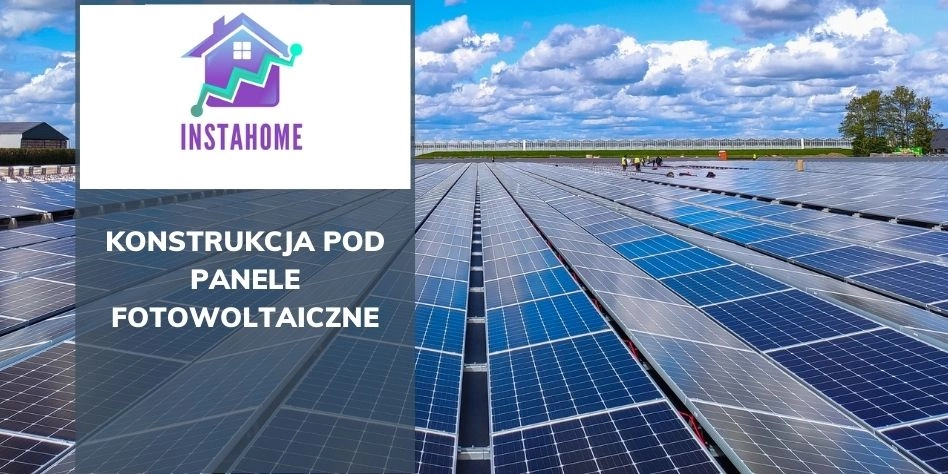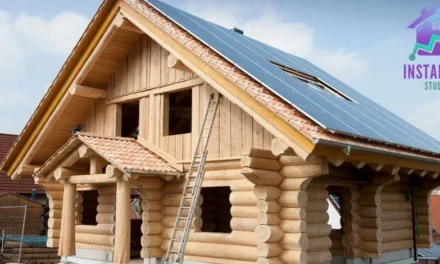The structure for photovoltaic panels is one of the most important issues to be considered when deciding on such an investment.
The purchase of the panels is one thing, because it remains to select the entire structure on which they will be stationed.
The structure itself should not only be durable and stable, but above all, it should be appropriately adapted to the conditions in which the panels will be erected, and these are usually very diverse.
It can be the roof of the building, a balcony, a field or even an area intended for flooding the panels.
Okay, what are the types of photovoltaic panels, where exactly should we use them and what are their characteristics? You will learn this and much more in this article.
Spis Treści
Types of structures for photovoltaic panels
As I said, the structure for photovoltaic panels above, at the moment there are quite a few types and their proper selection is a key issue if we want a durable and stable set that will last at least those dedicated by many manufacturers for 25 years.
Free-standing structures
Free-standing structures, as the name already suggests to us, are structures that are placed on the ground, which is why their second quite popular term is a structure on the ground.
It has several different mounting options, such as a structure driven into the ground (this usually applies to the ground), a structure poured with concrete, an anchored structure and a screw structure.
In my opinion, the names of the assembly methods are quite self-explanatory and do not require any lengthy explanation.
Anchored, i.e. mounted with anchors, screwed, i.e. screwed to the surface with screws, and so on.
The free-standing systems themselves have quite a few interesting features that make them a very attractive option.
These include, among others:
No high legal requirements because if the power of your panels does not exceed 50kW, you will not have to apply for any legal permits for construction.
Possibility of developing a free area, e.g. around the house. If you have access to an unshaded area, this is the perfect place to put solar panel systems. Especially if it is land with low agricultural potential.
Free optimization of positioning and inclination. In contrast to, for example, roof or balcony structures, there are not so many restrictions here regarding the most cost-effective arrangement of the entire structure.
Structures for a pitched roof
Pitched roof constructions are perfect for surfaces covered with bitumen tiles (commonly referred to as roofing felt), ceramic tiles, plain tiles, slate tiles, trapezoidal sheets, seam sheets, seam sheets, metal roof tiles and many others.
Thanks to such a large number of possible surfaces on which structures can be applied, you are able to choose the right variant without worrying about details regarding stability, etc.
ATTENTION! Remember that not all available kits must be compatible with every roof finish option listed above. Everything here depends on which manufacturer of roof structures we choose.
Structures for flat roofs, facades and balustrades
They are usually available in many different versions, mainly broken down by the angle of inclination. The most popular are 5, 10, 15, 20, 30 degrees.
Of course, you can find those with an angle of 35, 40, 45, etc. here everything is also largely dependent on the manufacturer himself.
The division may also occur due to the method of assembly of a given structure.
The most popular are anchor and ballast.
Bolt anchors are mounted, as the name suggests, with anchors, while ballast ones operate on the principle of a kind of rails / racks.
The structure for two photovoltaic panels costs about $ 500 per unit
The prices of the construction are very much dependent on which type we have chosen.
Below you will find a specific list of how much a specific frame for one panel costs.
These are only illustrative prices for January 2023. Why?
Structures for solar panels in the years 2020 – 2022 became very expensive due to the unstable situation of steel prices and metal and metal-based products in general.
For this reason, it is possible that in the near or distant future prices will go up again.
The construction for photovoltaic panels on the ground costs from $ 1,400 upwards
However, it is important what material the frame is made of and whether we decide to buy a used or new piece directly from the manufacturer.
We will pay around $ 5,000 or even more for a new free-standing frame.
The structure for photovoltaic panels on a sloping roof costs approx. $ 400 – 500 per piece
In the case of used mounts, we will find much cheaper shopping options, oscillating around $ 200 per item or even less (the price itself will depend heavily on the condition of the frame). If you are interested in buying, I recommend visiting portals such as OLX or Sprzedaży.pl. For new ones, the best option will be directly from the manufacturers’ stores.
Structures for solar panels on a sloping roof cost about $ 200 for new sets.
This is by far the cheapest option of all available.
Of course, the material from which the structure itself is made plays a big role here.
It is worth making it resistant to rust, because otherwise our investment will be destroyed sooner than it will pay off.
The construction for photovoltaic panels is made of high-quality aluminum or galvanized steel
What the structure is made of is crucial.
What do we care if we buy the whole set cheaply, if after a few years the only thing it will be suitable for is to be exchanged or sold for scrap.
The most basic issue is that the whole thing should be resistant to rusting and contact with other severe weather conditions such as strong wind, low temperature and high temperature, all kinds of precipitation, etc.
If our structure is made of good quality aluminum or galvanized steel, we have nothing to worry about.
At the moment, these are one of the most trusted materials used for the production of such elements.





